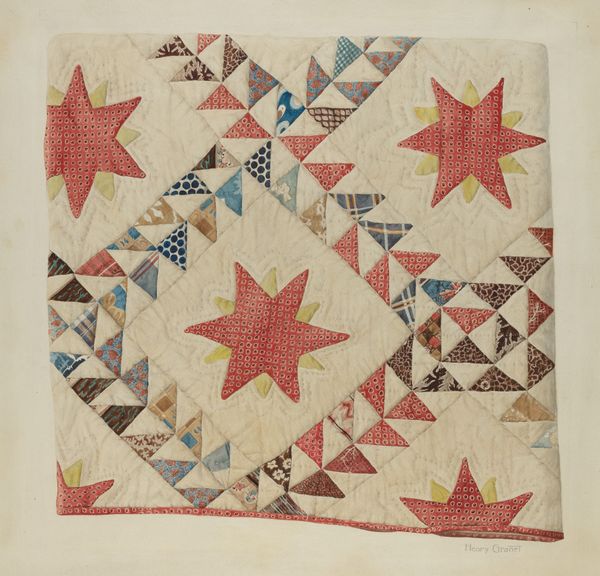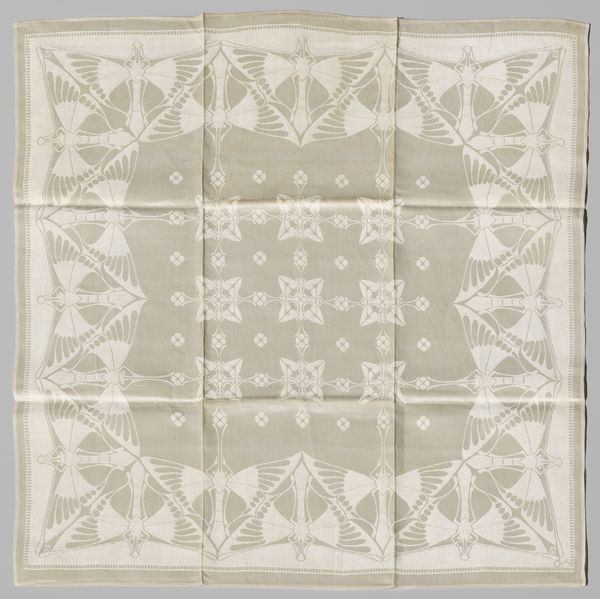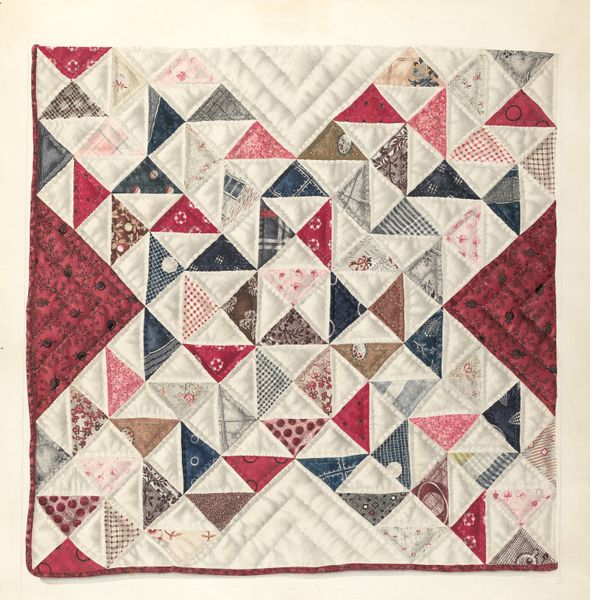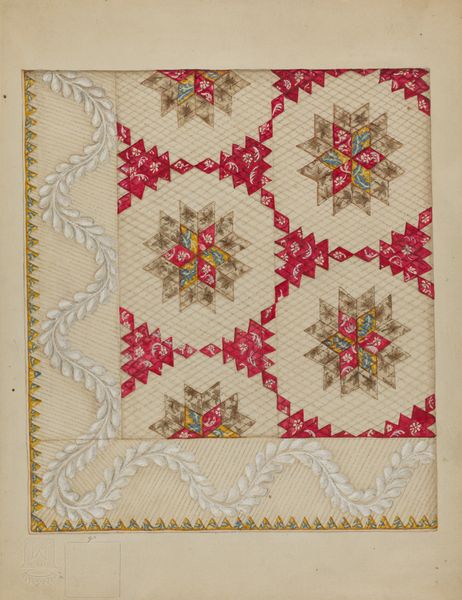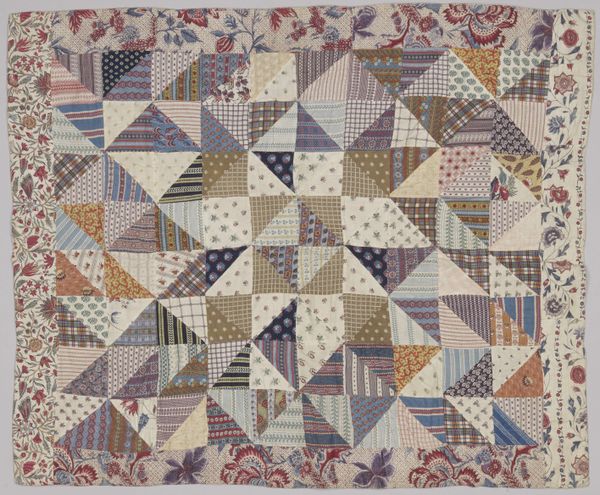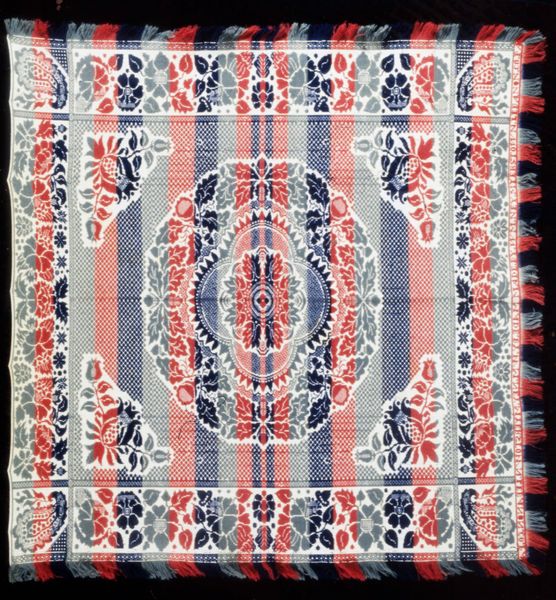
textile
#
textile
#
folk-art
#
geometric
Dimensions: overall: 60.4 x 55.2 cm (23 3/4 x 21 3/4 in.)
Copyright: National Gallery of Art: CC0 1.0
Editor: Here we have a "Pieced Quilt" made around 1939. I find its patchwork patterns both comforting and visually intriguing, especially with the handwriting in the central square. What are your initial thoughts when you look at this piece? Curator: My immediate response considers the social function of quilts like this one. In the 1930s, creating a quilt was very often a collaborative event involving many women. These weren't just textiles for warmth; they were significant expressions of community, often used to mark important life events. Does knowing this influence your perception? Editor: Absolutely, it shifts my view. I hadn't considered the community aspect so strongly. Were the patterns common, and did the color schemes carry significance, or did individual choices dictate the finished product? Curator: The geometric patterns, often passed down through generations, did have symbolic resonance and served as a medium for storytelling. Consider the fabrics used. Were they remnants, suggesting thrift and resourcefulness? The color choices – were these deliberately political, reflecting available dyes, or expressive of personal aesthetics? All this contextual information is a glimpse into their world. Editor: That makes sense. The handwritten part now makes it so much more than just pattern work. It really is a group endeavor. Do you feel institutions maybe overlook the cultural richness of textiles like this? Curator: I think, for many years, works such as these quilts were vastly underappreciated within institutions because folk art did not quite measure up to the academy’s ideals of "high art." More recently, and rightfully, cultural associations have grown. Thinking of art like this opens up exciting research opportunities on American life of the time. Editor: Yes, it shows an incredibly important angle to understanding society and community during that era. Thank you. It adds so many new layers for me to think about!
Comments
No comments
Be the first to comment and join the conversation on the ultimate creative platform.

